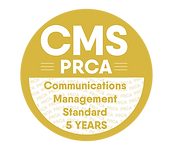A Cancer Strategy for Northern Ireland: After much delay, who will pay?
13 April 2022 - by Adam NewtonAfter years of campaigning, a commitment in New Decade, New Approach, and a delay due to the COVID-19 pandemic, Northern Ireland finally has its first Cancer Strategy.
The Strategy has been developed collaboratively, using the co-production and co-design processes, which are a fairly new approach to policy making locally. This approach allowed for the maximum amount of input from a range of key stakeholders through the creation of Strategy Sub-Groups. There were seven subgroups reflecting the patient journey which included: prevention; diagnosis; treatment; care and support; living well; palliative / end of life; and children and young people. Each subgroup was chaired by an individual outside of the Department of Health, either a clinician or a member of a cancer charity.
The final Strategy, which will have a lifespan of 10 years, has 60 actions for the Department to take forward. It has been broken down into four key themes:
- Preventing Cancer
- Diagnosing and Treating Cancer
- Supporting People to Live Well and Die Well
- Implementing the Strategy
Additional to the Strategy, the Minister of Health also announced the location of two prototype Rapid Diagnosis Centres, which will be based in Whiteabbey Hospital in Newtownabbey and South Tyrone Hospital in Dungannon. It is expected the first patients will be welcomed before the end of this year.
The Strategy comes at a vital time for cancer services, with the most recent cancer waiting times indicating that once again targets have not been met. This will be a major focus for any incoming Executive and Health Minister following the election, with the Strategy estimated to require annual recurrent funding of £145 million and a total revenue requirement estimated at £778 million.
The Department has recognised the need for priority funding for the implementation of the Strategy. Each action has been given a timeframe for completion once funding has been secured. With budgets stretched, the impact of Covid still being felt within the health system, and the need for services to be rebuilt post-covid, finding the funding to deliver the strategy will be key.
The production of the Strategy is only the first step of the process of the full reform of cancer services, ensuring they can meet the challenges in the years to come. It will be up to an incoming Executive and Minister of Health to ensure this Strategy is supported both politically and financially.
The question that remains is, where will the money come from?








